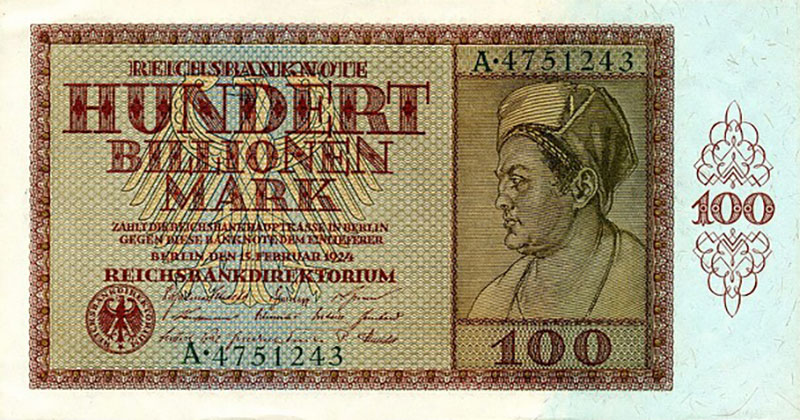History and Common Sense Warning Signals

Spanish- born philosopher and essayist George Santayana (1865-1952), in his 1905 volume, Reason in Common Sense, is especially remembered for these words: “Those who cannot remember the past, are condemned to repeat it.” This is often phrased more pointedly: “Those who cannot learn from history are doomed to repeat it.”
In June 2025, the US national Debt was $36.2 Trillion, and its annualized GDP was $30.3 Trillion. This is a ratio of slightly over 119 percent.
In economics, annual Gross Domestic Product (GDP) is the total monetary value of all final goods and services produced within a country's borders over a year. It serves as a crucial indicator of a nation's economic performance and size.
Having a 119 percent National Debt to GDP ratio is a strong indicator that the government is engaging in unsustainable inflationary spending that could result in severe economic chaos and even economic and financial collapse, destroying savings, severely hindering industry and commerce, and reducing large segments of the population to poverty.
The German Weimar Republic hyperinflation from 1921 to1923 gives a painful history of the consequence of runaway government spending. In 1913, before the beginning of World War I in 1914, Germany’s currency was on a gold standard and had a GDP of 237 billion gold standard German Marks. The gold standard was abandoned during the war, and Germany paid for the war by borrowing. German inflation was 140 percent from 1914 to 1918. Following the end of the war in 1918, GDP was approximately 173 German Marks and their debt 156 billion marks, making their Dept to GDP ratio approximately 90 percent. The Versailles Treaty of 1919—a shameful exercise of French vengeance and economic folly—added 50 billion German Marks to German debt, bringing it to 206 billion marks. This gave a Debt to GDP ratio of 119 percent, very close to where the US is now.
The Social Democrat Party of the German Weimar Republic, however, continued and expanded social and other spending by printing more marks with no backing—fiat money—which is basically what the US and most of Western Europe is doing now. In August 1921, the German Central Bank began buying up the remaining gold coins and other gold-backed money for increasingly outrageous prices in fiat marks, helping to create monetary panic.
Before the war, the exchange rate for the gold-backed mark was 4 marks for one US dollar. By The end of the war the ratio was 8.9 marks to the dollar. By mid-1922 the ratio was 320 marks to the dollar, and by December 1922, it was 7,400 marks to the dollar. By November 2023, one dollar was valued at over 4.2 trillion German marks. In February 2024, the German Central Bank was forbidden by legislation to print more marks. The currency was finally stabilized by establishing the Reichsmark, backed by industrial and commercial properties and mortgages. All previous debts had been wiped out by paying them off with nearly worthless inflated marks.
However, the hyperinflation had impoverished millions and ruined countless businesses.
During the German Hyperinflation people bought almost anything rather than holding increasingly worthless marks. Real estate values eventually returned, although government rent controls ruined millions of businesses and homeowners. Early investors in gold, silver, and other precious metals did well. Those who held diversified stock portfolios of large, solid companies eventually did well, although there were so many panics and wild gyrations of the market, that huge sudden losses were common. Many small and moderate-sized companies were wiped out.
Below is the Debt to GDP ratio for the G20 according the Trading Economics as of December 2024. These differ slightly with the figures of other organizations, especially those with 2025 updates or projections.
Argentina 83%, down considerably from a previous reading of 157%.
Australia 44%
Brazil 77%
Canada a troubling 111% and rising.
China 88% and rising
France, a troubling 113% and rising.
Germany 63%.
India 82%
Indonesia 39%
Italy, a troubling 135%
Japan 237%, among the worst in the world. Some attribute this to aging population and increasing social security obligations.
Mexico 50%
Netherlands 44%
Russian Federation only 16%. My latest calculation for 2025 is nearly 20%, probably from increased war production. Low debt is one reason Russia has been able to nullify the impact of US and NATO sanctions.
Saudi Arabia 30%
Singapore, a surprising 173%, but Singapore’s huge financial assets far exceed its debt.
South Africa 77%
South Korea 47%
Spain 102%, some concern.
Switzerland 38%
Turkey 25%
Unted Kingdom 96%, imminent troubles.
United States 124%, very troubling but my 2025 calculation of 119% shows some improvement.
The total for the European Union is 81%.
Here are some others of interest, both positive and negative:
Greece, a troubling 154%, Ireland 40%, Belarus 24%, Denmark 31%, Sweden 34%, Norway 55%, Poland 55%, Ukraine was at 90% in 2024 but is now on US life support and near economic and probably military and government collapse.
One weakness of these figures is that the raw GDP numbers do not reflect adjustments that should reflect differing cost-of-living or purchasing power among nations. The GDP-PPP (purchasing power parity) does reflect this but has not generally been used against the debt level. For example, the nominal Russian GDP is only $2.1 trillion dollars, whereas adjusted for purchasing parity, Russia’s GDP-PPP is much greater at $7.2 trillion. Since the US is the standard for adjustments, both the nominal GDP and GDP-PPP are the same, $30.3 trillion for June 2025. China’s nominal GDP is $19.2 trillion, but its GDP-PPP in more than twice that at $40.7 trillion. Most of the G20 would look better, sometimes much better, using GDP-PPP rather than nominal GDP for calculating debt to GDP ratios. If GDP-PPP is used for debt to GDP ratio, the United States and Japan are close to a tie in being most threatened by increasing debt. However, using GDP-PPP for the ratio is experimental and may have some analytical comparison difficulties. Nonetheless, it’s just common sense—overbearing national debts are BAD and have multiple dangers.
However, let us return to the German hyperinflation of 1921-1923 to underscore just how painful and devastating runaway government spending and debt can be. Famous American writer, Pearl Buck, who was in Germany in 1923, later wrote:
“People on pensions became destitute. Most people lost all their savings. The values of hard work and decency that earned these savings often perished as well. People were asked to pay one million marks for a single egg. When the government froze rents, rental income became essentially worthless, and the value of real estate plummeted. Real estate recovered after the hyperinflation, but millions had already sold their properties at desperately low prices. In the last stages of hyperinflation, the economy itself began to collapse.”
Inflation soon reached dizzying daily increases. Factory workers demanded to be paid three times a day. A German-born American told how his father had bought a 20-year life insurance policy in 1903 and made his monthly payments faithfully. In 1923, when he cashed it in, he was only able to buy a loaf of bread with it.
According to British historian Adam Ferguson, there was a huge demand for pianos, most of them bought by families with little musical interest. The government could not print money fast enough to keep up with the inflated demand.
On November 9, 1923, near the chaotic height of the German hyperinflation, Adolf Hitler and his fledgling National Socialist German Workers Party made an unsuccessful attempt to overthrow the state government of Bavaria. You know the rest of the Hitler story.
Do we have a problem? In 2010, when I first wrote about the dangers of debt and inflation, US national debt was $13.5 trillion. In 2025, our debt is now $36.2 trillion, a multiple of 2.68 or 168 percent increase. The Consumer Price Index has increased 46 percent since 2010. That has robbed many people of a considerable amount of buying power of their savings and suppressed the living standards of those with a substantial percentage of fixed income. But as our rapidly rising debt shows, it can get worse, much worse.
“My people are destroyed by a lack of knowledge…”—Hosea 4:6a









 Mike Scruggs is the author of two books: The Un-Civil War: Shattering the Historical Myths; and Lessons from the Vietnam War: Truths the Media Never Told You, and over 600 articles on military history, national security, intelligent design, genealogical genetics, immigration, current political affairs, Islam, and the Middle East.
Mike Scruggs is the author of two books: The Un-Civil War: Shattering the Historical Myths; and Lessons from the Vietnam War: Truths the Media Never Told You, and over 600 articles on military history, national security, intelligent design, genealogical genetics, immigration, current political affairs, Islam, and the Middle East. 


